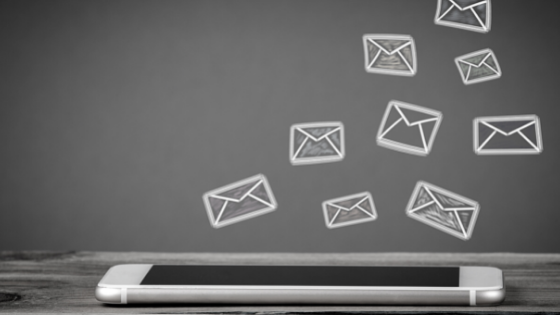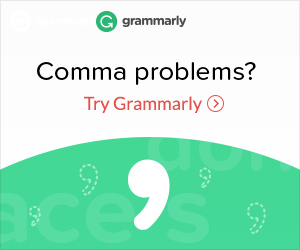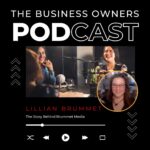Imagine you’re running a business and you’re eager to find new customers. You’ve heard that cold emailing can be an effective way to reach potential clients, but the thought of crafting those emails fills you with frustration. You’re not a techie, and the whole process seems overwhelming and confusing. You worry that your emails will end up in the spam folder or worse, ignored altogether.
You’ve tried sending out generic, mass emails, but they’ve fallen flat. Your open rates are dismal, and you’re not getting any responses. You’re discouraged and wondering if cold emailing is just a waste of time.
This blog is for you – the non-tech-savvy business owner who wants to harness the power of cold emailing to generate B2B leads and grow your business.
We’ll break down the process into simple, easy-to-follow steps & tools like email finders or CRM that even a tech novice can handle. By following these practical tips, you’ll transform your cold email efforts into a B2B lead-generating machine, even if you’re not a tech whiz.
Why Cold Emailing is Effective for Lead Generation
Cold emailing is an effective strategy for lead generation. By reaching out to potential customers directly via email, businesses can effectively nurture and generate leads. Cold email marketing is a cost-effective method that allows companies to target specific audiences and personalize their messages.
This approach also enables businesses to establish direct communication channels with potential customers, allowing for more meaningful interactions and increased chances of converting leads into paying customers. By using the power of personalized messaging and strategic targeting, cold emailing has proven to be a highly effective tool for
Cold emailing may seem like an outdated tactic, but it remains a powerful tool for generating leads in the B2B space. Here are some key reasons why cold emailing is still effective for lead generation:
- Direct and Personal Approach: Cold emailing allows you to directly reach out to your target audience with personalized messages. Unlike other marketing methods, cold emails are sent directly to the inboxes of the decision-makers you want to connect with. This personalized touch creates a sense of importance and increases the chances of engagement and conversion.
- Cost-Effective: Compared to other lead generation strategies, cold emailing is relatively low-cost. With a well-crafted cold email campaign, you can reach a large number of potential leads without breaking the bank.
- High Conversion Rates: When done right, cold emails have the potential to yield high conversion rates. By carefully researching and targeting your audience, crafting compelling messages, and providing value, you can capture the attention and interest of your prospects. This increases the likelihood of them taking the desired action, whether scheduling a meeting, requesting a demo, or making a purchase.
- Tracking and Analytics: Cold emailing provides valuable data and insights that can help improve your lead generation efforts. Through analytics and tracking tools, you can measure your cold email campaigns’ open rates, click-through rates, and conversion rates. This data allows you to identify what’s working, and what’s not, and make data-driven decisions to optimize your strategy.
- Preferred communication channel for B2B prospects:- According to statistics, 89% of marketers use email as the primary channel to generate leads. In today’s digital world, emails have become an integral part of daily communication, making it easier for businesses to reach their target audience through this channel. Studies have shown that both B2B decision-makers and millennials prefer email as a means of communication, making cold emailing a highly viable option for lead generation.
Top Tools for Generating Leads Through Cold Emailing
When it comes to generating leads through cold emailing, having the right tools at your disposal can make all the difference. These tools can help you streamline your cold email outreach process, track responses, and ultimately increase your conversion rates. Here are some of the top tools that you should consider using:
- Email Finding Tools: To create a list of desired prospects for your business, you can use tools like GrowMeOrganic. This cost-effective lead source covers the essentials and provides accurate and up-to-date contact information.
- Cold Email Software: Investing in reliable cold email software is essential for effective outreach. Look for features such as template creation, automated follow-ups, and personalized mail merge options. Some popular options include Outreach.io, Yesware, and Woodpecker.
- Email Tracking Software: Tracking the performance of your cold email campaigns can help you analyze what works and what doesn’t. Tools like Mailtrack, Yesware, and Mixmax provide insights into email open rates, link clicks, and response rates.
- CRM Integration: Integrating your cold email efforts with a customer relationship management (CRM) tool can help you manage and organize your leads more efficiently. Tools like HubSpot, Salesforce, and Pipedrive offer seamless integration with popular cold email software.
- Email Verification Tools: Sending emails to invalid or inactive email addresses can harm your sender’s reputation. Email verification tools like NeverBounce, ZeroBounce, and Bouncer can ensure that your emails only reach valid recipients.
8 Steps to Generate B2B Leads with Cold Outreach
Cold outreach can be a highly effective strategy for generating B2B leads if done correctly. By following these 8 steps, you can maximize the success of your cold email campaigns and generate valuable leads for your business.
1. Market Research
Generating B2B leads with cold outreach can be a highly effective strategy for businesses, especially when combined with market research. By conducting thorough market research, businesses can identify their target audience, understand their pain points, and personalize their cold outreach approach.
The first step is to define and refine your target audience. Through market research, you can gather data and insights about specific industries, company sizes, or job titles that are most likely to benefit from your product or service. This allows you to narrow down your outreach efforts and focus on prospects who have a higher chance of converting into leads.
2. Defining ideal customer profiles
To define ideal customer profiles, start by analyzing your existing customer base. This data will provide valuable insights into the type of businesses and individuals who are most likely to benefit from your product or service.
Once you have identified the key attributes of your ideal customer, you can then tailor your cold outreach strategy accordingly. Craft personalized messages that resonate with each specific group, addressing their pain points and highlighting how your offering can solve their challenges.
3. Finding Buyer Personas and Contact Information
To effectively reach your target audience through cold email outreach, it is essential to have a clear understanding of your buyer personas and the contact information of the individuals who fit those profiles. Here are some strategies to help you find buyer personas and gather relevant contact information.
- Utilize LinkedIn: LinkedIn is a powerful platform for finding and connecting with professionals in your industry. Use advanced search filters to narrow down your target audience based on job title, company size, location, and more.
- Industry Directories: Explore industry-specific directories and listings to find potential leads. These directories often provide contact information for businesses and individuals operating in a particular industry.
- Lead Generation Software: Invest in lead generation software that helps you gather contact information from various sources. These tools can scrape websites, social media profiles, and other online platforms to collect relevant contact details.
4. Building rapport with targets
Once you have identified your buyer personas and gathered their contact information, the next step is to build rapport with your targets. Building rapport is essential for establishing a positive and personal connection with your potential customers. Here are a few strategies to help you build rapport effectively:
- Start with a personalized introduction: When reaching out to your targets, begin your email with a personalized greeting that shows you have taken the time to research and understand their specific needs or interests.
- Show genuine interest: Ask open-ended questions to encourage your targets to share their thoughts, challenges, and aspirations. Actively listen and demonstrate empathy to build trust and understanding.
- Provide value: Offer helpful resources or insights related to their industry or pain points. This demonstrates your expertise and willingness to support them, creating a favorable impression of your brand.
- Follow up regularly: Regular follow-ups show your persistence and dedication. It keeps the conversation going and allows you to address any concerns or questions they may have.
5. Writing effective icebreakers
When it comes to cold email outreach, the first impression is crucial. Writing effective icebreakers is essential to capture your prospect’s attention and initiate a conversation. Here are some tips to help you craft compelling icebreakers:
- Personalize: Tailor your email icebreaker to each prospect. Reference something specific about their company, recent achievements, or even a common interest you discovered during your research.
- Be concise: Keep your icebreaker short and to the point. Avoid lengthy introductions or unnecessary details. Get straight to the point and make it clear why you’re reaching out.
- Be engaging: Use a conversational tone and language that is relatable to your prospect. Ask thought-provoking questions or make a statement that sparks curiosity. Make them feel like they’re part of a conversation rather than being sold to.
- Show value: Offer something valuable right from the start. Whether it’s a resource, insight, or solution to their pain point, demonstrate that you can provide value to their business.
6. Super-personalizing messages
Use this information to create a highly personalized message that shows you have taken the time to understand their specific needs and interests.
Highlight the value you can offer them based on their unique situation. Explain how your product or service can directly address their pain points or help them achieve their goals. By demonstrating an understanding of their challenges and offering a solution, you can pique their interest and encourage further engagement.
Ensure your message is concise, clear, and compelling. Avoid generic and overly salesy language, focusing instead on building trust and establishing credibility. Leverage any relevant social proof or testimonials that can help demonstrate your expertise and the success you have achieved with similar clients.
7. Adding clear and simple CTAs
A CTA is a prompt that tells your prospect what action you want them to take next, such as scheduling a call, downloading a resource, or signing up for a demo. It’s important to make your CTAs clear and concise, so there is no confusion about what action you want them to take.
Here are a few tips for adding effective CTAs to your cold email outreach:
- Use action-oriented language: Start your CTA with verbs that inspire action, such as “schedule,” “download,” or “sign up.” This prompts your prospect to take immediate action.
- Keep it simple: Avoid using complicated language or multiple CTAs in one email. Stick to one clear and focused CTA per message to avoid overwhelming your prospect.
- Create a sense of urgency: Use words like “limited time offer” or “exclusive opportunity” to create a sense of urgency and encourage your prospect to act quickly.
- Provide clear instructions: Make sure to include any necessary details or steps required to complete the action. This eliminates any confusion and streamlines the process for your prospect.
8. Importance of follow-up and keeping the conversation going
Following up is important because it serves as a reminder to the prospect about your initial contact, ensuring that your brand stays fresh in their mind. It demonstrates your dedication, persistence, and interest in working with them.
By keeping the conversation going, you can build rapport and trust with the prospect, allowing you to better understand their needs and offer tailored solutions. This ongoing dialogue enables you to address any concerns, provide additional information, and establish yourself as a reliable and knowledgeable resource.
By following these 8 steps, you can create a solid framework for generating B2B leads through cold outreach. Remember to tailor your approach to each prospect, provide value, and never underestimate the power of personalized communication. With time and persistence, your cold outreach efforts will yield positive results and contribute to the growth of your business.
The Benefits of Combining Cold Emailing with Other B2B Lead Generation Strategies
When it comes to B2B lead generation, cold emailing has proven to be a highly effective marketing channel with a remarkable ROI of 29%. But did you know that combining cold emailing with other strategies can further amplify your results? Let’s explore the benefits of integrating cold emailing with other B2B lead generation strategies:
- Social Selling:
Social selling is a powerful approach that leverages social media platforms to connect with prospects and build relationships. By combining cold emailing with social selling, you can enhance your outreach efforts. This combination can lead to better open rates, reply rates, and ultimately, more conversions. - SEO and Content Marketing:
SEO and content marketing go hand in hand with B2B lead generation. By optimizing your website and creating valuable content, you can attract organic traffic and generate leads. Combine this with cold emailing by directing recipients to your highly relevant content or offering them exclusive resources. This synergy allows you to capture the interest of potential leads and establish yourself as a thought leader. - Paid Advertising:
Paid advertising is an effective strategy to reach a wider audience & heavy traffic. By using platforms like Google Ads or social media ads, you can target specific demographics and industries. When combined with cold emailing, you can create a comprehensive lead generation funnel. - Webinars:
By hosting informative and engaging webinars, you can attract leads who are genuinely interested in your industry. Incorporating cold emailing into your webinar strategy allows you to invite relevant contacts personally. - AI Chatbots:
AI chatbots are becoming increasingly popular in lead generation. By combining cold emailing with AI chatbots, you can provide a seamless and personalized experience to your prospects. Use your cold email to initiate contact and then direct leads to an AI chatbot for further engagement. These bots can answer frequently asked questions, offer product demos, and even collect contact information.
Conclusion
In conclusion, cold email strategies can be powerful tools for boosting B2B lead generation. By following a few key tips, such as personalizing your emails, crafting compelling subject lines, and providing value to your recipients, you can increase your chances of getting positive responses.
Remember to always be respectful and professional, making it easy for prospects to engage with your outreach efforts. With diligent planning and execution, cold emails can become an effective means of generating quality leads for your business. Happy emailing!























